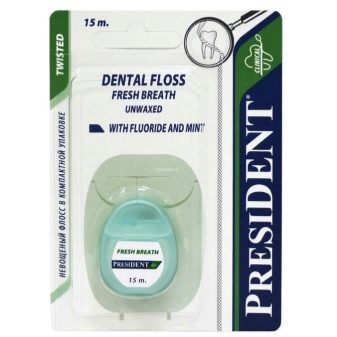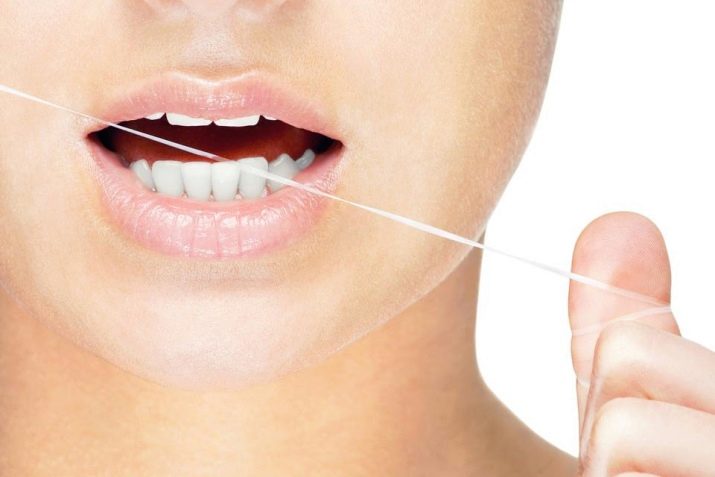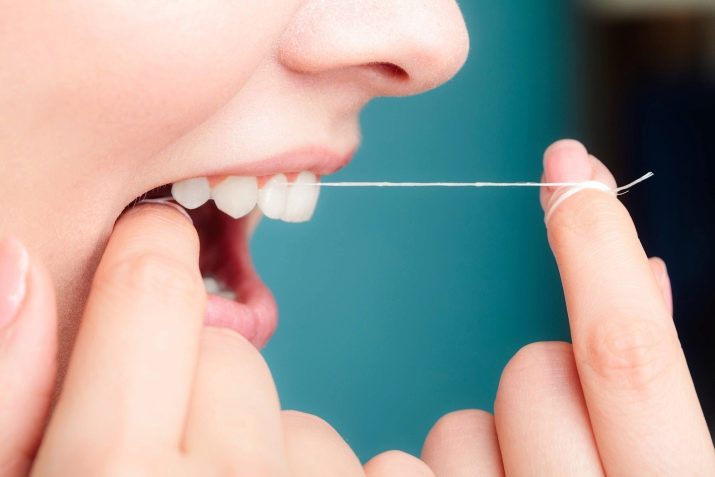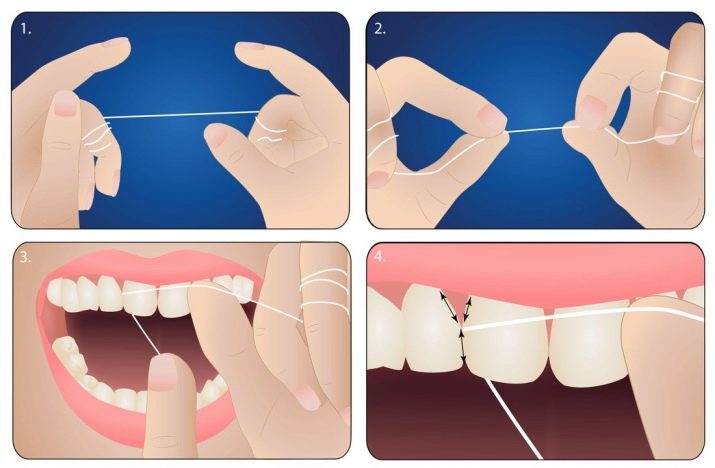Waxed versus unwaxed dental floss: how is it different and which is better?

Waxed and unwaxed dental floss has long been one of the staples of oral care. But not all buyers know what these terms mean, what is the difference between them, which option is better. It is worth learning in more detail about the difference between voluminous and flat threads for teeth - this will allow you to choose the right option that can provide effective cleaning in any conditions.


What is the difference?
Dental floss is an essential element of proper oral care. They are produced coated with wax and unwaxed, so the consumer always has to choose the most suitable option. The differences between them, as usual, lie in the details.
- Waxed dental floss. This is the name given to materials that have an outer coating made from natural beekeeping products. As a basis, fibers of natural or synthetic silk, nylon and nylon are used. In addition to wax, such threads can be impregnated with an antiseptic composition based on sodium fluoride or menthol to eliminate bad breath.
The surface of the product is smooth, which reduces the risk of injury to the gums and enamel.


- Unwaxed dental floss. It is devoid of additional coating, has the same base as waxed, but different types of impregnation. The most commonly used compounds here are fluorine or chlorhexidine. The impregnated threads are distinguished by easier sliding, provide precise control over the quality of hygiene procedures.
The products provide a large area of contact with the enamel, do not leave wax deposits on the teeth.


Comparing waxed and non-waxed dental floss, we can say that products with additional coating are more suitable for beginners who are just mastering this type of hygiene products.
And also they are usually recommended for use with a large number of fillings, wearing dentures and bridges.
Unwaxed dental floss is aimed at people with healthy teeth who pay great attention to thoroughness of cleaning. There is also a compromise option: floss made of polytetrafluoroethylene, smooth and without wax coating, very strong and durable.

Among the parameters that distinguish dental floss, its shape is also found. It can be of several types.
- Volumetric. A thread of this type has the ability to increase its diameter when wetted with saliva. It is quite soft, it is considered a universal solution.

- Flat. A universal option for people with tight adhesion of the elements of the dentition. This option is also well suited for the treatment of prostheses or bridges.

- Round ribbon. Quite a common option. Threads with such a section are intended for people with a pronounced width of the gaps between the teeth. The product has a fairly large diameter.

Both waxed and unwaxed dental floss can be found in a variety of different sections. You can make the right choice for the first time by consulting your dentist.

What is the best choice?
When choosing the right floss for oral care, the decision has to be made not only on the basis of the product range available at the nearest pharmacy.
Waxed floss is considered ideal for a first introduction to the process of removing food debris from the interdental space.
They slide well, are low-traumatic, suitable for adults and children over 10 years old. Oral care with installed orthodontic and orthopedic structures is carried out using just such floss.

For those who already have some experience with dental floss, non-waxed options are the best solution. They allow you to fairly accurately monitor the quality of cleaning, they even pass into narrow interdental spaces. Unwaxed floss is not suitable for oral care with irregular dentition. And also they are of little use for working out the interdental spaces where fillings and bridges are installed.

There are several things to consider when choosing the optimal dental floss.
- Basis type. The highest quality flosses are made from natural and artificial silk, they do not delaminate, they rarely break. Teflon dental floss is also highly durable. Cheap and not too high quality products are made of nylon.
- Impregnation type. Usually it is represented by antibacterial agents that prevent the formation of caries: silver nitrate, chlorhexidine, sodium fluoride. And also there are flavored options with menthol or mint impregnation, which simultaneously cleanse and deodorize the oral cavity.
- Appointment. In addition to the standard waxed and unwaxed floss, you can find on the market special products for very sensitive teeth, threads against bleeding gums. Some options are equipped with a handle for comfortable hygiene. Orthopedic cleaners on the market are commonly referred to as superfloss.
- Terms of use. Waxed dental floss leaves a specific plaque on the enamel surface, which must be additionally brushed off with a brush and paste. This option is not suitable for use during the day - after visiting a restaurant or cafe. It is more focused on home use.
- Cleaning quality. Unwaxed floss can be used to prevent tartar. It provides tight contact with the enamel surface, removes more dirt. Waxed items provide a polishing effect and a healthy shine.They are hypoallergenic, which can be important in case of intolerance to bee products.
- Manufacturer. The best dental floss brands sell their products through pharmacy chains. Most often these are companies specializing in products for the dental industry. You should not purchase special floss for oral hygiene over the Internet. The product may be of poor quality, cause allergies or inflammation of the gums.



These are the main criteria that you should rely on when choosing dental floss for cleaning your mouth. The recommendations will be relevant for most types of products, both with and without wax coating.

How to use?
It is recommended to use dental floss at home at least once a day. When using braces, it is imperative to pay special attention to maintaining hygiene. In this case, dental floss is an indispensable component of daily care.
The rules for using these oral care products are pretty clear.
- Prepare dental floss. It is preliminarily recommended to clean your teeth using a brush and paste to remove plaque and basic dirt. For beginners, it is better to use waxed threads, which have easier gliding. For one procedure, you will need a piece 25-30 cm long.
- Wind up the thread. It is fixed on the fingers or special holders. It is more convenient to use the first option. Control over the movement and tension of the floss is carried out by changing the distance between the thumb of the right hand and the index finger - on the left hand.
- Thread the thread gently into the interdental space. You need to hold the segment with your fingers at both ends. If there are braces on the teeth, the floss is carefully threaded under their wire base. It is important to avoid sudden movements, jerks.
- Start cleaning. To do this, you need to move the dental floss back and forth. When using unwaxed floss, the action is continued until the enamel begins to creak. This cleans the interdental spaces over the entire surface of the row - first at the top, then at the bottom. The direction of movement of the thread should be away from the gums.
- Upon completion of the procedure, the floss is removed. This is done very carefully by lifting one end.

The use of dental floss cannot completely replace other hygiene procedures. When using floss, it is imperative to complement their work with full-fledged cleaning with a brush and paste, rinse aid to maintain fresh breath. Only an integrated approach can ensure the maintenance of dental and oral health for a long time.







